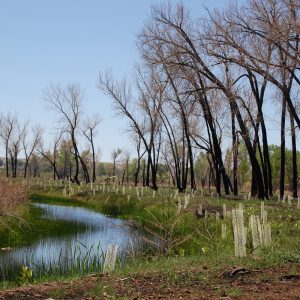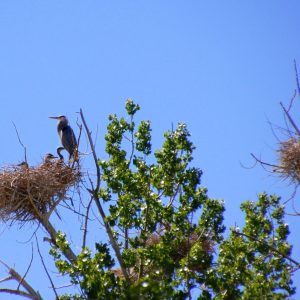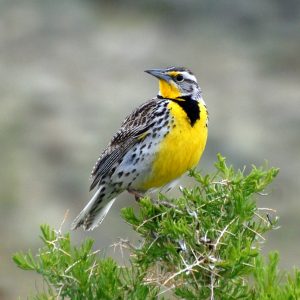June has arrived in the Sierra foothills, and after a few periods of cooler temperatures and even a bit of rain in May, temperatures are rising. Its common knowledge that California’s Central Valley gets blazing hot, but this year seems to be exceptionally hot, with temperatures already starting to get into the 90’s and even over 100 degrees. Most of the grasses are completely dry and light brown, although some are stubbornly hanging on to a fringe of green color and herbaceous pliability. Most of the wildflowers are done, except for a few late bloomers, such as the harvest brodiaea (Brodiaea elegans), which are in full swing. Seeds are maturing and dispersing rapidly, and seed collection has occupied most of fellow intern, Julie’s and my time. So far we have about 9 or 10 collections completed or soon to be completed.
A few weeks ago I was able to attend a grass ID class at CSU Chico. This class was extremely useful, especially since we are trying to concentrate on grass seed collections this season. The class was specifically devoted to springtime grasses of the central valley and sierra nevada foothills, which made it even more relevant. The class consisted of sitting for eight hours in a classroom, bent over a microscope and the Jepson manual, until my eyes couldn’t focus and my brain stopped functioning. The teacher systematically went through the Poaceae (grass family) key, and showed us many samples of local grasses. Since the class, my desk has been strewn with pieces of dissected grasses; lemmas, glumes, paleas, awns, ligules… and of course a hand lens and the Jepson manual open to the Poaceae key. My confidence with grasses, a plant group I often ignore due to the difficulty to ID them, has increased.
As with learning about any layer of natural history, delving into grass ID has changed the lens through which I view the natural world during my excursions into the field. Most of the formerly lush green grass at our Kanaka Valley parcel is the exotic annual barbed goat grass (Aegilops triuncialis), which seems to be creating a near monoculture of dense thatch. On the other hand, I am more attuned to patches of native perennial bunch grasses persisting in rocky outcrops or the shade of oak trees.
I was also able to visit an interesting area of the Mother Lode Field Office, the Red Hills. This ACEC (Area of Critical Environmental Concern) is about a two hour drive south of our office. The botanist, former botanist, wildlife biologist, fellow CLM intern and I left highway 50 and all trace of Sacramento as we headed to Calaveras county. After driving through many small foothill towns of 200, or even as few as 50 people, and then driving down a labyrinth of rough dirt roads, I felt reassured that I am working for the BLM. The Red Hills is a sparsely vegetated belt of serpentine soil that is reminiscent of a desert, although it gets the same precipitation as the surrounding oak woodland and chaparral, meaning the magnesium and iron rich soil must inhibit normal growth patterns. Ceanothus cunatus, which is almost the only shrub, is spaced widely with large gaps of soil filled with forbs. Thousands of white tarweeds, a late bloomer, waved in the breeze as we searched for yellow star thistle populations, that the former office botanist has spent years removing by hand. We didn’t find any, except at a site adjacent to a constant seed source, proving that persistence and early detection can stop aggressive weeds.
Joe Broberg
Mother Lode Field Office
El Dorado Hills, CA










